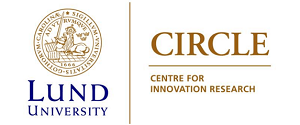No 2014/19: Acquisitions of Start-ups by Incumbent Businesses A market selection process of “high-quality” entrants?
Martin Andersson () and Jing Xiao ()
Additional contact information
Martin Andersson: CIRCLE, Lund University and Department of Industrial Economics, Blekinge Institute of Technology
Jing Xiao: CIRCLE and Department of Economic History, Lund University
Abstract: We analyze the frequency and nature by which new firms are acquired by established businesses. Acquisitions are often considered to reflect a technology transfer process and to also constitute one way in which a “symbiosis” between new technology-based firms (NTBFs) and established businesses is realized. Using a micro-level dataset for Sweden in which we follow new entrants up to 18 years after entry, we show that acquisitions of recent start-ups are rare and restricted to a small group of entrants with defining characteristics. Estimates from competing risks models show that acquired start-ups, in particular by multinational enterprises (MNEs), stand out from entrants that either remain independent or exit by being much more likely to be spin-offs operating in high-tech sectors, having strong technological competence, and having weak internal financial resources. Our overall findings support the argument that acquisitions primarily concern NTBFs in market contexts where entry costs are large, access to finance is important and incumbents have high market power.
Keywords: acquisitions; post-entry performance; market selection; start-ups; new technology-based firms (NTBFs); innovation; competing-risk model; Sweden
JEL-codes: G34; L22; L26; O32; O33
32 pages, October 3, 2014
Full text files
201419_Andersson_Xiao.pdf
Questions (including download problems) about the papers in this series should be directed to Torben Schubert ()
Report other problems with accessing this service to Sune Karlsson ().
RePEc:hhs:lucirc:2014_019This page generated on 2024-09-13 22:16:05.

